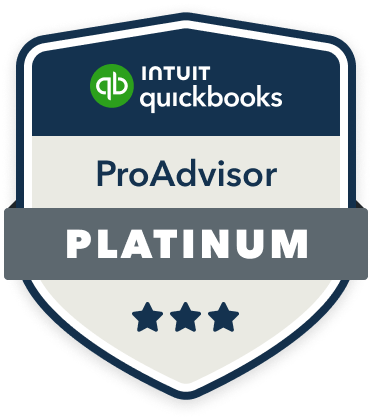Here are the answers to common questions about what’s in the Coronavirus Tax Relief stimulus plan as of March 28, 2020.
Published by The New York Times.
Who will be covered by the expanded program?
The plan wraps in far more workers than are usually eligible for unemployment benefits, including self-employed people and part-time workers. The bottom line: Those who are unemployed, are partly unemployed or cannot work for a wide variety of coronavirus-related reasons will be more likely to receive benefits.
How much will I receive?
It depends on your state. Benefits will be expanded in an attempt to replace the average worker’s paycheck, explained Andrew Stettner, a senior fellow at the Century Foundation, a public policy research group. The average worker earns about $1,000 a week, and unemployment benefits often replace roughly 40 to 45 percent of that. The expansion will pay an extra amount to fill the gap. Under the plan, eligible workers will get an extra $600 per week on top of their state benefit. But some states are more generous than others. According to the Century Foundation, the maximum weekly benefit in Alabama is $275, but it’s $450 in California and $713 in New Jersey. So let’s say a worker was making $1,100 per week in New York; she’d be eligible for the maximum state unemployment benefit of $504 per week. Under the new expansion, she gets an additional $600 of federal pandemic unemployment compensation, for a total of $1,104, essentially replacing her original paycheck. States have the option of providing the entire amount in one payment, or sending the extra portion separately. But it must all be done on the same weekly basis.
Are gig workers, freelancers and independent contractors covered?
Yes, self-employed people are newly eligible for unemployment benefits. Benefit amounts will be calculated based on previous income, using a formula from the Disaster Unemployment Assistance program, according to a congressional aide. Self-employed workers will also be eligible for the additional $600 weekly benefit provided by the federal government.
What if I’m a part-time worker who lost my job because of a coronavirus reason, but my state doesn’t cover part-time workers? Am I still eligible?
Yes. Part-time workers are eligible for benefits, but the benefit amount and how long benefits will last depend on your state. They are also eligible for the additional $600 weekly benefit.
What if I have Covid-19 or need to care for a family member who has it?
If you’ve received a diagnosis, are experiencing symptoms or are seeking a diagnosis — and you’re unemployed, partly unemployed or cannot work as a result — you will be covered. The same goes if you must care for a member of your family or household who has received a diagnosis.
What if my child’s school or day care shut down?
If you rely on a school, a day care or another facility to care for a child, elderly parent or another household member so that you can work — and that facility has been shut down because of coronavirus — you are eligible.
What if I’ve been advised by a health care provider to quarantine myself because of exposure to coronavirus? And what about broader orders to stay home?
People who must self-quarantine are covered. The legislation also says that individuals who are unable to get to work because of a quarantine imposed as a result of the outbreak are eligible.
I was about to start a new job and now can’t get there because of an outbreak.
You’re eligible for benefits. You will also be covered if you were immediately laid off from a new job and did not have a sufficient work history to qualify for benefits under normal circumstances.
I had to quit my job as a direct result of coronavirus. Would I be eligible to apply for benefits?
It depends. Let’s say your employer didn’t lay you off but you had to quit because of a quarantine recommended by a health care provider, or because your child’s day care closed and you’re the primary caregiver. Situations like that are covered. But this provision wasn’t intended to cover people who quit (or want to quit) because they fear that continuing to work puts them at risk of contracting coronavirus, according to congressional aides.
My employer shut down my workplace because of coronavirus. Am I eligible?
Yes. If you are unemployed, partly unemployed or unable to work because your employer closed down, you’re covered under the bill.
The breadwinner of my household has died as a result of coronavirus. I relied on that person for income, and I’m not working Is that covered?
Yes.
Whom does the bill leave out?
Workers who are able to work from home, and those receiving paid sick leave or paid family leave are not covered. New entrants to the work force who cannot find jobs are also ineligible.
How long will the payments last?
Many states already provide 26 weeks of benefits, though some states have trimmed that back while others provide a sliding scale tied to unemployment levels. The bill provides all eligible workers with an additional 13 weeks. So participants in states with 26 weeks would be eligible for a total of 39 weeks. The total amount cannot exceed 39 weeks, but it may be shorter in certain states. The extra $600 payment will last for up to four months, covering weeks of unemployment ending July 31.
How long would the broader program last?
Expanded coverage would be available to workers who were newly eligible for unemployment benefits for weeks starting on Jan. 27, 2020, and through Dec. 31, 2020.
I’m already receiving unemployment benefits. Will I receive any help?
Yes. Even if you’re already receiving unemployment benefits for reasons unrelated to the coronavirus, your state-level benefits will still be extended by 13 weeks. You will also receive the extra $600 weekly benefit from the federal government.
My unemployment recently ran out — could I sign up again?
Yes. If you’ve exhausted your benefits, eligible workers can generally reapply. But how much you get and for how long depends on the state where you worked. Everyone gets at least another 13 weeks, along with the extra $600 payment.
Will this income disqualify me from any other programs?
Maybe. The additional $600 benefit counts as income when determining eligibility for means-tested programs, except for Medicaid and the Children’s Health Insurance Program, known as CHIP.
How long will I need to wait for benefits?
States have been incentivized to waive the one-week waiting period, but it’s unclear how long it will take to process claims — especially with state offices so strained by a flood of them.










